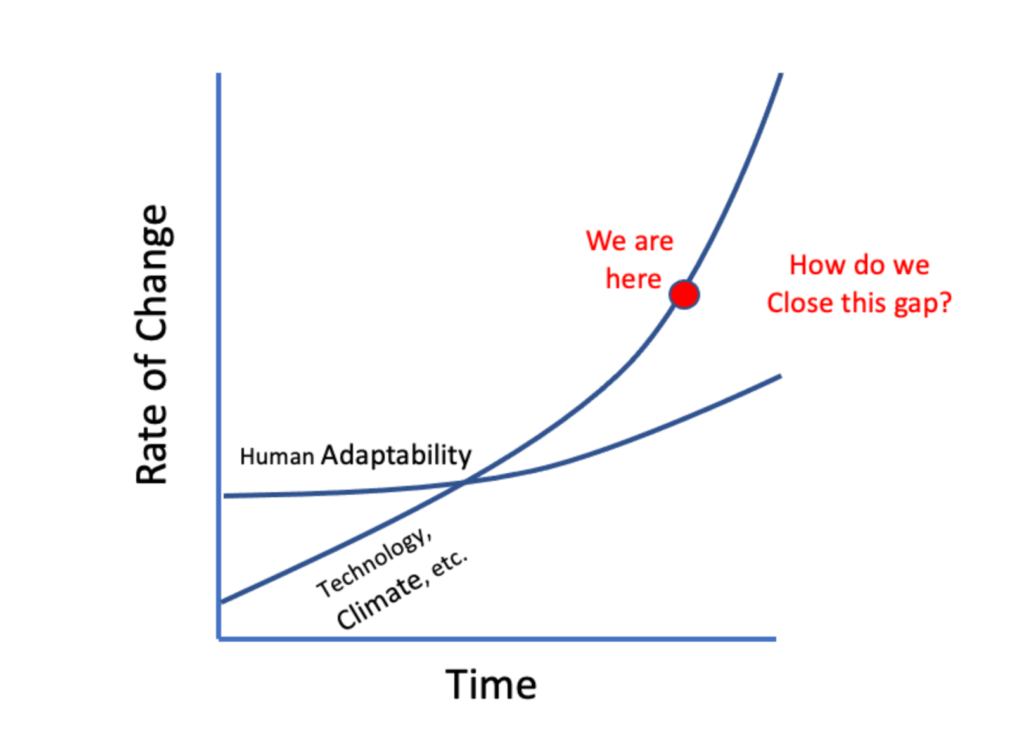I wrote a novel, but it turns out I wasn’t done writing. I have more to say…
Why? Because the process of writing the book changed me and my perspective.
This Blog/Substack will aim for the intersection of technology and the creative process. That intersection helps us understand what’s changing in our world, why it’s changing, where it might go, and most importantly, where we want it to go.
But let’s start with the novel – FUTUREPROOF – scheduled for publication in the summer of 2023. It’s speculative fiction set in the 2050s. Lots of prediction, a bit of climate change, and a compelling storyline about a lawyer and his family threatened by their external brain (or “ex-brain”), the same artificial intelligence that sustains them. A word to the wise, if someone offers you a second brain, you should probably think twice…
But I’m not writing here to sell books. (Check that — all authors are trying to sell books). I’m mainly writing here about the bigger picture of technology and creativity.

Writing started for me as my hobby. I never saw myself as a ‘creative’ type. I’m a lawyer, a hard worker … very serious. I didn’t identify with the creative persona that has no choice but to be creative, as if it comes from their soul. Turns out I was wrong about myself, and about the multiple pathways to develop creativity. I wrote FUTUREPROOF over several years, mainly on the London tube commuting back and forth to work. And the process taught me a few things that are worth exploring further:
So that’s what I’ll be writing about. How to be creative, in my case through writing. How our view of the future can tell us just as much about where we are now as where we might be going. (Spoiler alert – no one can reliably predict the future. AI may be able to someday, but we’re not there yet). And finally, how the best we can do when predicting the future is to unleash our creativity to widen the realm of the possible.
As a society, we’ve already passed the threshold of our capacity to deal with change. Climate change, political change, technological change — all are coming fast and furious, moving faster than our institutions can adapt and often beyond our personal comfort levels. The AI created image above was not possible a year ago. Today I made it in seconds. What will I be able to create tomorrow, and with what consequence?
In addition to opportunity, the pace of change creates some stark realities. The earth our children grow old in may not look exactly like ours today due to changing geography and diminishing biodiversity. The brain of a child born today likely will operate differently than ours as a result of access to advanced technology from birth. The jobs of the future may not resemble our current career paths. So how do we keep up? My answer – we write, we create, we explore, ideally with open minds and open hearts. Not all that is unfamiliar is wrong. And not all that is comforting is right. We have to figure it out.

The graph above, adapted from Thomas Friedman’s work, captures the idea well. And the question is, can we bend the human adaptability curve upwards to keep up with the exponential rate of change around us. That was one of my motivations behind FUTUREPROOF, to explore how a family in what may be our future world keeps up with change when it spirals out of control. It’s what I’ll be trying to do in this space. I’ll share what I’m learning about our technological future, comment on what I’m seeing, and hopefully add something for those of you who, like me, want to bring out their creative side. I’ll share my experiences, my adventure in getting published, ideas, interviews, some creative writing … I hope no two posts are the same.
Please join my march into the future by subscribing to Futureproof Fiction below.
A final note — my work writing FUTUREPROOF highlighted two charitable causes that I would like to support, potentially by dedicating a portion of book sale proceeds or subscription fees.
Note: I will always disclose when using AI to create content. That’s important, and we should all insist on that transparency in the media we consume.
